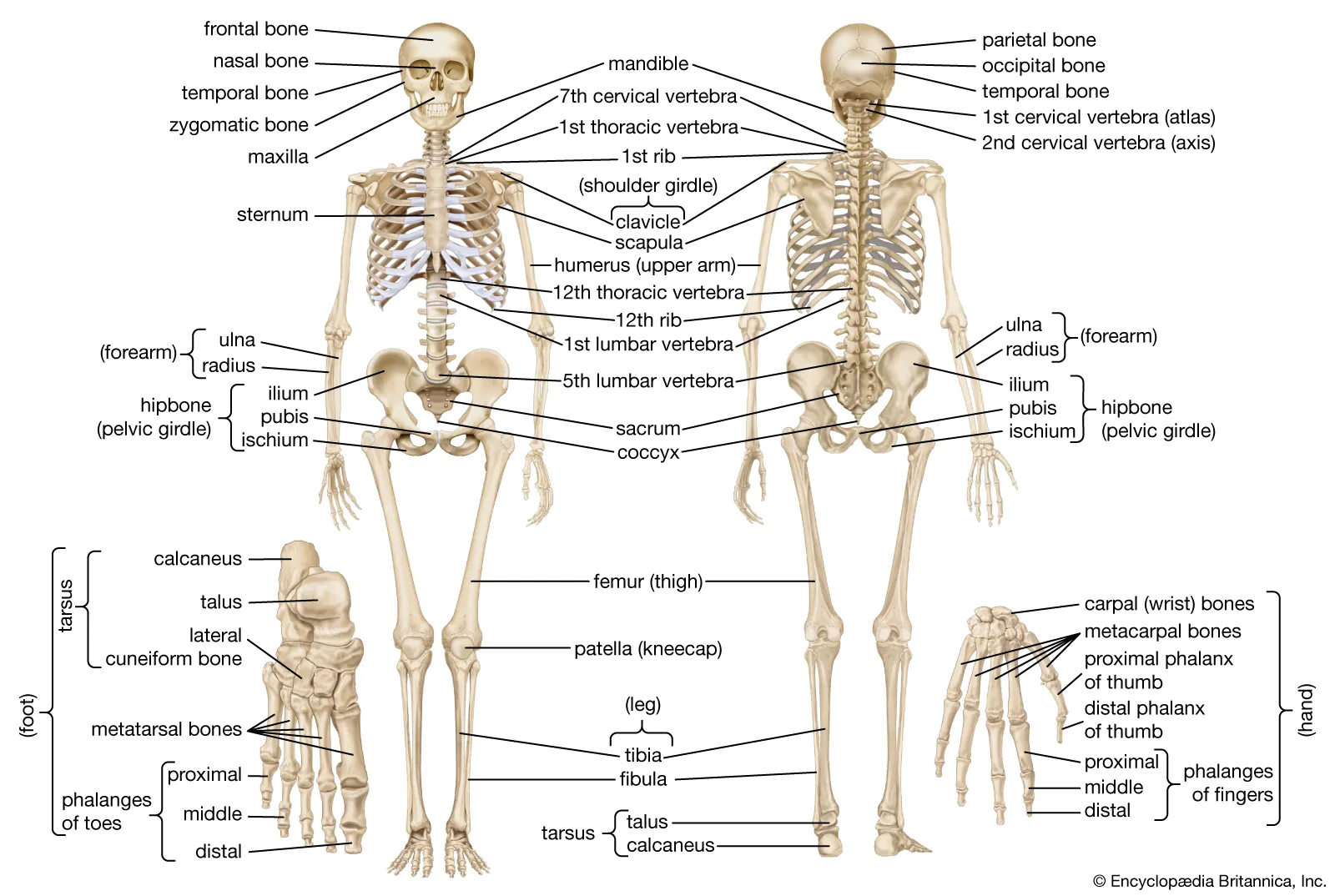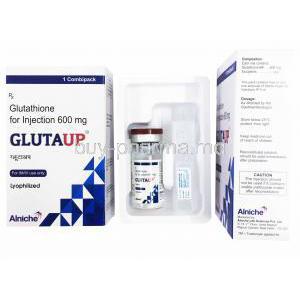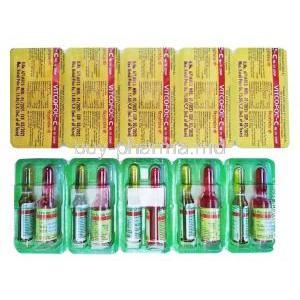Troyvit-D3, Cholecalciferol
- Introduction
- Composition of Troyvit-D3
- Detailed Breakdown of Active and Inactive Ingredients
- Cholecalciferol Concentration and Form
- Cholecalciferol as a Rodenticide
- Vitamin D: Cholecalciferol vs. D3
- Cholecalciferol from Lanolin
- Calcium Carbonate and Cholecalciferol Combination
- Cholecalciferol Material Safety Data Sheet (MSDS)
- Cholecalciferol Sources: Lanolin vs. Lichen
- Fermented Cholecalciferol
- Cholecalciferol Capsules
- Ergocalciferol and Cholecalciferol
- Uses of Troyvit-D3
- Off-Label Uses of Cholecalciferol
- How Troyvit-D3 Works
- Dosage and Administration
- Side Effects of Troyvit-D3
- How to Manage Side Effects of Troyvit-D3.
- Important Precautions
- Interactions of Troyvit-D3 with Other Medications
- Warnings and Contraindications
- Careful Administration Guidelines
- Specific Administration Considerations
- To Children
- Handling and Storage of Troyvit-D3
- Overdosage of Troyvit-D3
Introduction
Vitamin D is crucial, for health and comes in different types like Troyvit D3, which contains Cholecalciferol, a powerful form of Vitamin D3 known for helping the body absorb calcium and keeping bones strong.
Overview of Troyvit-D3 and its Active Ingredient Cholecalciferol
Troyvit D3 is a medication that utilizes the advantages of Cholecalciferol commonly referred to as Vitamin D3. Cholecalciferol plays a role in helping the body absorb calcium, which is crucial for maintaining strong bones and a healthy immune system. This specific formulation aims to address the problem of Vitamin D deficiency, in areas where sunlight exposure is limited.
Importance of Vitamin D in Human Health
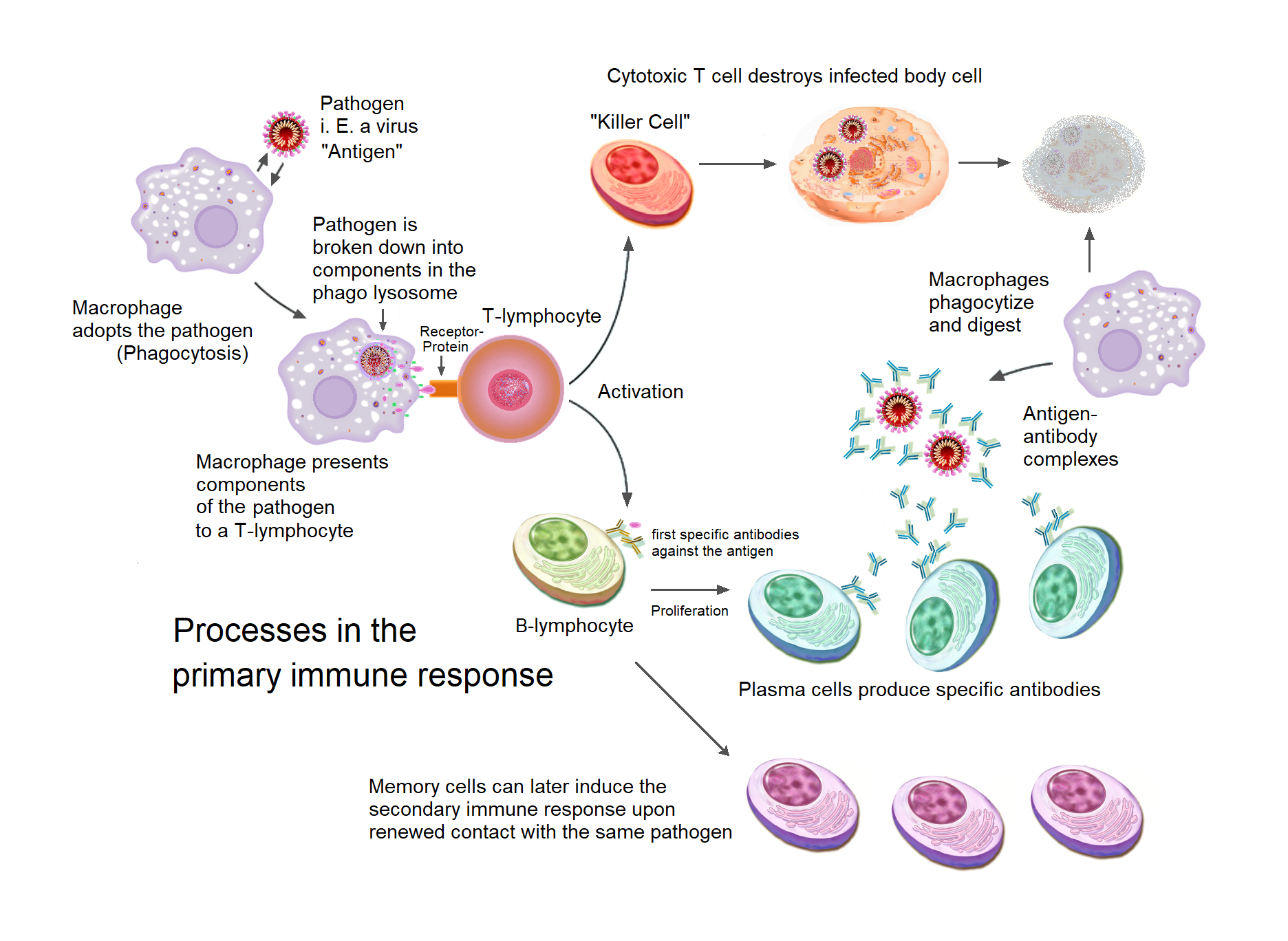
- Enhancing Bone Health and Growth; It helps the body absorb calcium and phosphorus essential minerals for building and keeping bones and teeth healthy.
- Guarding Against Chronic Illnesses; Maintaining Vitamin D levels could lower the chances of developing conditions, like multiple sclerosis, heart ailments and specific types of cancer.
Calcium Carbonate and Cholecalciferol: A Synergistic Combination
The combination of calcium carbonate and Vitamin D3 helps the body maintain and repair bone tissue effectively. Calcium carbonate acts as a source of calcium working together with Vitamin D3 to improve bone mineral density and overall skeletal strength. This combined effect not only helps prevent osteoporosis but also ensures strong bones for daily activities and long-term health.
In summary, Troyvit D3, containing Cholecalciferol plays a role, in supporting various aspects of human health by enhancing calcium absorption and providing direct benefits to bone health and immune function. Recognizing the advantages of this compound highlights the significance of maintaining optimal levels of Vitamin D in the body.
Composition of Troyvit-D3
Detailed Breakdown of Active and Inactive Ingredients
Troyvit D3 is crafted with a selected mix of active and inactive components to enhance health benefits. The main active element, Cholecalciferol is supported by a combination of substances, like magnesium stearate lactose monohydrate and silicon dioxide that help maintain the stability and effectiveness of the formula.
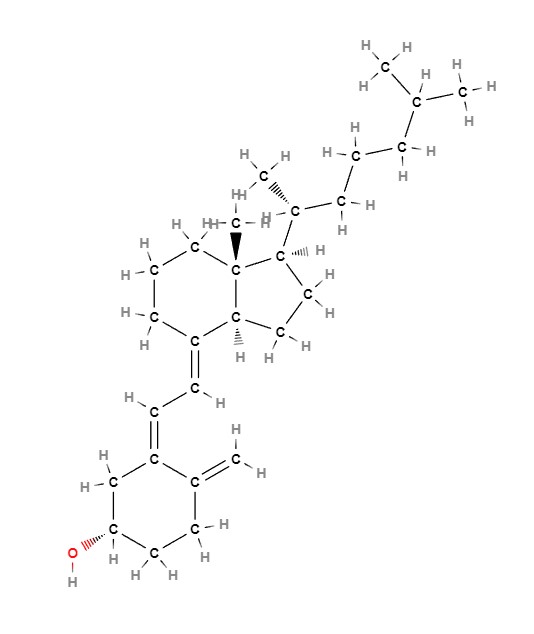
Cholecalciferol Concentration and Form
Troyvit D3 is made with an amount of Cholecalciferol designed to be easily absorbed and effective. This special type of Vitamin D3 is chosen because it does a job of increasing and keeping the right levels of vitamin D in the body.
Cholecalciferol as a Rodenticide
Cholecalciferol, besides being beneficial for health is also used as a rodenticide, in a non-traditional way. Its function involves using the compounds capacity to increase calcium levels in the bloodstream resulting in hypercalcemia that can prove fatal for rodents.
Vitamin D: Cholecalciferol vs. D3
Although 'Vitamin D3' and 'Cholecalciferol' are frequently used interchangeably they essentially refer to the substance. Cholecalciferol is indeed Vitamin D3, differentiated from D2 (ergocalciferol) by its origin from animals and its superior effectiveness, in human vitamin D processing.
Cholecalciferol from Lanolin
Cholecalciferol is often extracted from lanolin, a substance derived from the wool of sheep. This natural ingredient undergoes irradiation to produce Cholecalciferol, which is further refined for use in creating supplements and medications such, as Troyvit D3.
Calcium Carbonate and Cholecalciferol Combination
The combination of calcium carbonate and Cholecalciferol in formulations of Troyvit D3 works together to improve the absorption and retention of calcium in bones providing a valuable remedy, for osteoporosis and other issues related to calcium deficiency.
Cholecalciferol Material Safety Data Sheet (MSDS)
When dealing with any substances, like Cholecalciferol it's important to refer to its Material Safety Data Sheet (MSDS). This document offers safety instructions covering handling protocols, potential risks, and necessary first-aid steps to guarantee safe use across various scenarios.
Cholecalciferol Sources: Lanolin vs. Lichen
Cholecalciferol sourced from lichen is becoming increasingly popular as an alternative to the lanolin-derived version especially in vegan products. This shift provides a plant based option making Vitamin D3 supplements more accessible, to individuals adhering to vegan diets.
Fermented Cholecalciferol
Exploratory approaches, like fermentation are being studied for Cholecalciferol production. This method entails utilizing particular yeast strains that can transform sterols into Vitamin D3 offering an effective means of manufacturing.
Cholecalciferol Capsules
Cholecalciferol is commonly enclosed in capsules for convenience. These capsules are crafted to provide an amount of Vitamin D3 assisting in maintaining optimal vitamin levels for individuals, with low levels or heightened physiological requirements.
Ergocalciferol and Cholecalciferol
Ergocalciferol (also known as Vitamin D2) and Cholecalciferol (commonly referred to as Vitamin D3) are two types of Vitamin D that are commonly used in settings. While both are effective in preventing and treating Vitamin D deficiency Cholecalciferol is often preferred due to its ability to maintain levels of serum 25 hydroxyvitamin D leading to better treatment outcomes.
In summary, the comprehensive formula of Troyvit D3 featuring the ingredient Cholecalciferol along with other supporting components offers a strong solution, for addressing and preventing Vitamin D deficiencies catering to a wide range of health needs.
Uses of Troyvit-D3
Primary Indications for Troyvit-D3
Troyvit D3 is mainly used to prevent and treat health issues caused by a lack of Vitamin D. It helps with conditions like bones, in adults (osteomalacia) and children (rickets). It's also recommended for adults and people who don't get much sunlight as they are more likely to have Vitamin D deficiency.
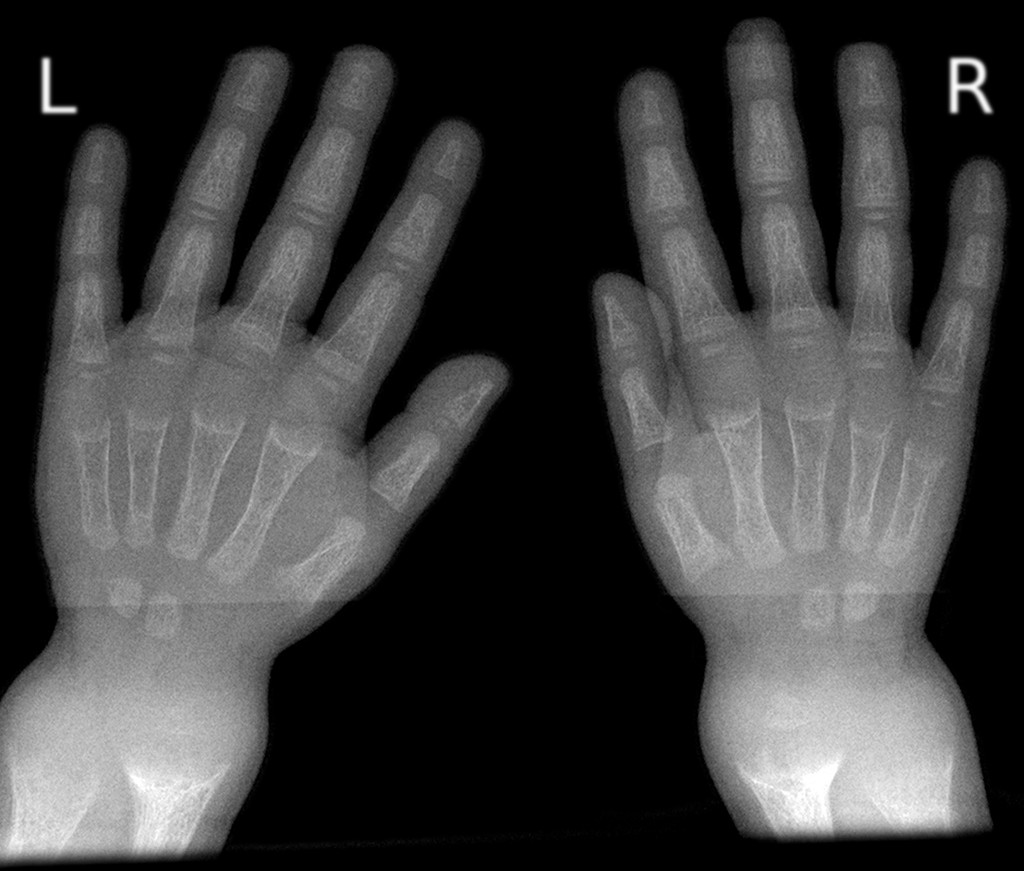
Benefits of Cholecalciferol in Bone Health and Calcium Regulation
Cholecalciferol, the form of Vitamin D3 present in Troyvit D3 plays a crucial role in maintaining the balance of calcium and phosphorus levels in the blood. Here are some key advantages;
- Improving Calcium Absorption; Cholecalciferol helps the body absorb calcium in the intestines ensuring a supply for various bodily functions.
- Strengthening Bone Structure; It assists in depositing calcium and phosphorus into bones enhancing their strength and composition.
- Preventing Bone Conditions; By regulating calcium levels Cholecalciferol helps prevent osteoporosis and lowers the chances of fractures in individuals.
In essence, using Troyvit D3 with Cholecalciferol offers support for bone health by promoting skeletal strength and maintaining calcium balance. This makes it a valuable option, for both measures and active treatment strategies.
Off-Label Uses of Cholecalciferol
Exploration of Non-Approved but Commonly Practiced Uses
Cholecalciferol, well known for its contribution, to maintaining bones has been utilized in various unapproved ways beyond its main purpose. While these applications lack approval they are backed by personal accounts and some research findings highlighting the diverse capabilities of this substance.
Cholecalciferol as Rat Poison
Using Cholecalciferol as a rodenticide is an off-label practice. High doses of Cholecalciferol can result in hypercalcemia leading to the accumulation of calcium in tissues and eventually causing kidney failure in rodents. This approach to pest management capitalizes on the effects of Vitamin D3 when given in excessive amounts, beyond what is naturally required by the body.
Cholecalciferol Toxicity Concerns
Excessive consumption of Cholecalciferol carries the risk of causing dangerous levels of calcium in the bloodstream, which can result in severe health complications like kidney stones, heart problems, and neurological issues. Signs of overexposure include feelings of nausea, vomiting, increased urination frequency, and dizziness all indicating the need, for medical care.
Use of Cholecalciferol in Veterinary Medicine
In settings, Cholecalciferol is occasionally employed off-label for treating issues in dogs like hypoparathyroidism. It plays a role in balancing calcium and phosphorus levels to its application in humans. However precise monitoring is crucial as the line, between harmful doses is quite thin.
Research Supporting Off-Label Benefits
Recent studies have started to explore the potential applications of Cholecalciferol. Research indicates that it could have a role in regulating the system and reducing inflammation suggesting its possible effectiveness in treating conditions such as autoimmune disorders and chronic inflammatory diseases.
Additional clinical trials are needed to confirm these results and establish efficient protocols for these purposes. While Cholecalciferol is known for its function of aiding calcium absorption and maintaining bone health its off-label uses. From pest management to experimental treatments for chronic illnesses. Underscore the compounds intricate biological effects and therapeutic possibilities. Thorough research and clinical supervision are crucial in striking a balance between benefits and risks, in these traditional uses.
How Troyvit-D3 Works
Mechanism of Action of Cholecalciferol in the Body
Cholecalciferol, also known as Vitamin D3 gets activated in the body through a two-step process. First, it undergoes hydroxylation in the liver to create 25 hydroxycholecalciferol. Then in the kidney, it forms its active state, 1,25 dihydroxycholecalciferol. This active hormone is essential for regulating calcium and phosphorus levels in the body by improving the absorption of these minerals in the intestines. This process is crucial, for maintaining bones and their optimal function.
The Role of Vitamin D Receptors and Cellular Effects
Vitamin D receptors (VDRs) are found in cells and tissues throughout the body. When activated Cholecalciferol binds to these receptors it triggers a series of responses that control cell growth, specialization and cell death. These processes play a role, in regulating the immune system and balancing calcium and phosphate levels in the bloodstream.
Dosage and Administration
Recommended Dosages for Different Age Groups and Conditions
- For babies and kids; It is suggested to take 400 600 IU every day for growth and strong bones.
- For grown ups; The usual amount to keep your vitamin levels in check is between 600 and 800 IU, per day but if you're lacking or have higher requirements you might need more.
- For seniors; Due to decreased skin production and dietary intake as we age an intake of 1000 2000 IU may be needed.
Methods and Timing of Administration for Optimal Absorption
Troyvit D3 is effectively absorbed when consumed alongside a meal rich, in fats since Cholecalciferol is a type of vitamin that dissolves in fats. Normally it is given in the form of pills or tablets. To ensure absorption it's recommended to take it at a consistent time daily preferably in the morning to imitate the natural vitamin D production cycle that sunlight triggers in the body.
Side Effects of Troyvit-D3
Common Side Effects and Their Frequencies
The typical adverse reactions associated with Troyvit D3 consist of hypercalcemia symptoms like nausea, fatigue, and headaches which usually improve with dosage changes. Additional common minor side effects involve issues such, as constipation and dry mouth.
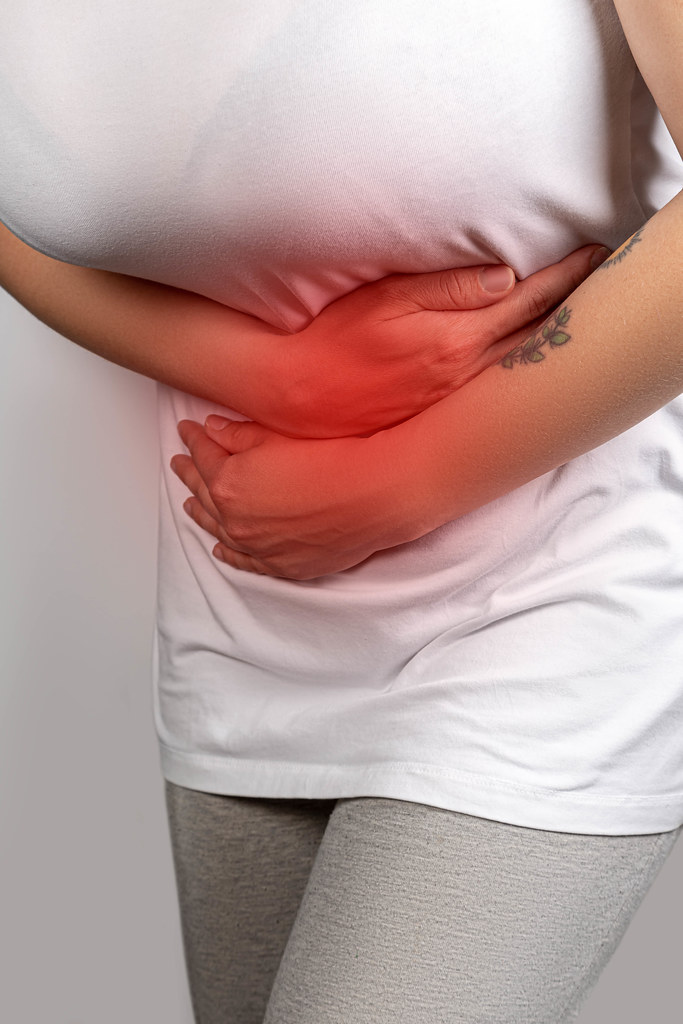
Potential Serious Adverse Reactions
Although uncommon Cholecalciferol can sometimes cause adverse effects, especially when taken in high amounts. These adverse reactions may include kidney problems, soft tissue calcification, and dangerous levels of calcium in the blood that can harm blood vessels and organs if not properly treated.
It is essential to monitor patients' blood calcium levels and kidney function when they are receiving long-term high-dose Cholecalciferol supplementation. Overall having an understanding of how Troyvit D3 works and administering it carefully can help effectively address Vitamin D deficiencies and ensure the safe use of this treatment, for patients.
How to Manage Side Effects of Troyvit-D3.
Troyvit D3 is often recommended as a supplement to treat vitamin D deficiencies, which can help with health issues. However similar to medications it might lead to side effects in certain people.
These negative reactions such, as feeling tiredness and headaches can impact your daily routine and be uncomfortable. To continue taking this supplement without these interruptions it's important to learn how to handle these side effects.
Nausea: Identifying Triggers and Alleviating Discomfort
Feeling queasy is a complaint among those taking Troyvit D3. It might kick in soon after you've had the supplement and stick around for a while. To tackle this try out these tips;
- Have it with a meal; Swallowing Troyvit D3 on a stomach could make the nausea worse. It's better to take it alongside a meal to protect your stomach lining and reduce any irritation.
- Stay hydrated; Make sure you're drinking water as being dehydrated can make the nausea more intense. Sipping on water throughout the day can help ease the symptoms.
- Try ginger or peppermint; Natural remedies, like ginger or peppermint tea can provide relief. They have properties that are known to calm nausea and soothe that uncomfortable feeling.
Fatigue: Addressing Energy Depletion and Restoring Vitality
Many users of Troyvit D3 often complain of feeling tired which can really affect how productive and healthy they feel. To tackle this fatigue here are some strategies to consider;
- Timing Matters; It's helpful to take the supplement when fatigue won't disrupt your day much like in the evening. This way your body can process it while you sleep.
- Eat Well; A diet full of nutrients can help fight off fatigue. Include foods, with complex carbs, protein, and iron to keep your energy levels up.
- Stay Active; Doing some light exercises like taking a short walk can help boost your energy by improving blood flow and oxygen supply to your muscles.
Headache: Preventing and Relieving Discomfort
Experiencing headaches when taking Troyvit D3 supplements could be linked to changes in blood calcium levels. If you're dealing with headaches here are some tips to manage them;
- Stay hydrated; Not drinking enough water can trigger headaches so make sure to stay hydrated, throughout the day.
- Consider magnesium supplements; Magnesium is known for supporting brain health and may help lessen the frequency and intensity of headaches. It's always best to consult your healthcare provider before incorporating magnesium into your routine.
- Get rest; Adequate sleep is essential as lack of rest can worsen headaches. Establishing a sleep schedule can help reduce this risk.
Other Side Effects: A Holistic Approach to Management
Experiencing more than queasiness, tiredness, and headaches you may also encounter other side effects like stomach discomfort, lightheadedness, or skin irritations. To address these;
- Keep Track of Symptoms; Record any side effects on a basis. This can assist you and your healthcare provider in recognizing patterns and triggers enabling targeted interventions.
- Consult Healthcare Providers; Make sure to discuss any severe side effects with your healthcare provider. They might adjust your dosage. Recommend a different type of supplement.
- Be Patient During Adjustment Period; Understand that your body may require time to adapt to the supplement. Side effects typically decrease as your system gets used to the regimen.
In essence, while Troyvit D3 is helpful in treating vitamin deficiency it does come with potential side effects. By following these approaches individuals can effectively manage the effects and maintain their overall health and well-being. Always seek advice, from a healthcare before modifying your supplementation routine.
Important Precautions
Conditions and Patient Profiles Requiring Caution
Certain patient characteristics and health conditions require evaluation before prescribing Troyvit D3. People with levels of calcium in their blood overactive parathyroid glands or kidney issues should approach Cholecalciferol with care to avoid worsening calcium imbalances. Individuals, with difficulties absorbing nutrients also need dosage adjustments to guarantee proper absorption of the vitamin.
Adjustments in Dosage or Administration Methods
Patients with health conditions may need changes in the regular dosage or how the medication is given. For example, individuals with liver problems may need a dose while those with stomach problems could find it helpful to receive injections instead to overcome absorption difficulties, in the digestive system.
Cholecalciferol Toxicity in Dogs and Treatment
When dogs ingest Cholecalciferol by mistake it's vital to seek veterinary care. The usual treatment includes giving fluids through an IV using diuretics and administering corticosteroids to control calcium levels and reduce the risk of kidney harm.
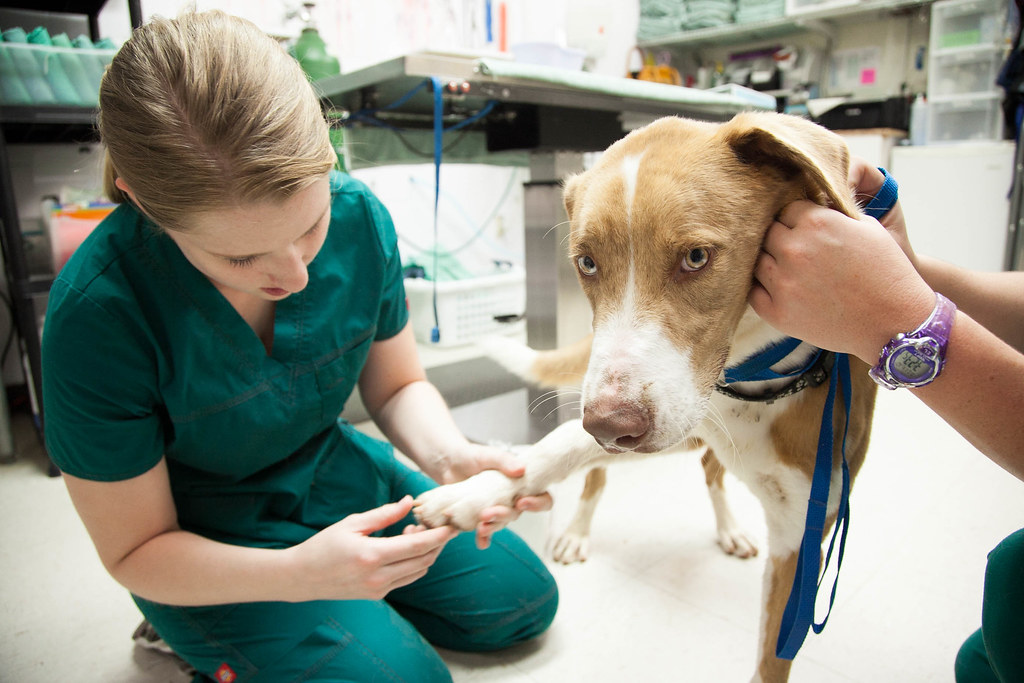
Cholecalciferol Antidote
In cases of Vitamin D overdose Calcitonin can be used as a remedy. It rapidly reduces the levels of calcium, in the blood by slowing down bone cell activity and promoting the excretion of calcium through the kidneys.
Interactions of Troyvit-D3 with Other Medications
Common and Significant Drug Interactions
Cholecalciferol may interact with medications, which could affect how well they work or cause unwanted side effects. For example, it might reduce the effectiveness of some drugs that lower cholesterol and raise the chances of hypercalcemia when combined with thiazide diuretics or calcium supplements.
Effects on Absorption and Efficacy of Cholecalciferol
Certain types of medications such as corticosteroids and weight loss drugs can hinder the body's ability to absorb and process Cholecalciferol, which may require changes in dosage. Moreover, anticonvulsants have been known to speed up the breakdown of Vitamin D in the body leading to a decrease, in its effectiveness.
Warnings and Contraindications
Situations Where Troyvit-D3 Should Not Be Used
Patients who are allergic to Cholecalciferol or any ingredients in Troyvit D3 should avoid using it. It is also not recommended for individuals, with blood calcium levels (hypercalcemia) or excess vitamin D (hypervitaminosis D).
Risks Associated with Overdose and Long-term Use
Much Troyvit D3 can cause major health problems, like kidney stones hardening of soft tissues, and severe high levels of calcium in the blood that could affect the heart and brain. Using Troyvit D3 excessively over a period can also result in ongoing health issues emphasizing the importance of having medical supervision and regularly checking blood calcium levels during treatment.
Because of the effects and potential dangers linked to Troyvit D3 healthcare providers need to assess each patient's unique characteristics and existing health conditions to improve treatment outcomes and ensure safe usage.
Careful Administration Guidelines
Special Considerations for Administering to At-Risk Populations
Using medications such as Troyvit D3 requires care for certain groups with health concerns or unique physiological factors. These include adults, expectant mothers, breastfeeding women, and people with conditions, like kidney disease or hyperparathyroidism. It's crucial to monitor blood calcium levels and kidney function closely to prevent outcomes and maintain treatment effectiveness.

Monitoring and Ongoing Assessment Recommendations
Regular check ups are advised for safety and efficiency. These appointments should involve blood tests to keep an eye on calcium and vitamin D levels kidney function tests to detect any signs of kidney damage and evaluations of bone density to assess the effects on long term bone health. Consistent follow up visits enable adjustments in medication dosage and administration techniques as, per reactions and evolving health circumstances.
Specific Administration Considerations
To Elderly Patients
When giving Cholecalciferol to patients it's important to consider their specific bodily traits like decreased kidney function and changes in how they absorb fat. Adjusting the dosage might be necessary to avoid hypercalcemia, which's a common concern, for this group. It's crucial to monitor them regularly to quickly deal with any issues that may come up during treatment.
To Pregnant Women and Nursing Mothers
Pregnant women and breastfeeding mothers need dosing plans to cater to their own requirements as well as those of the developing baby. Recent studies have highlighted the importance of maintaining levels of Cholecalciferol for fetal bone growth and maternal well being. However excessive intake can result in issues like hypercalcemia posing risks to the child.
- Safety Note; Cholecalciferol is generally regarded as safe for use during pregnancy. Breastfeeding when adhering to recommended doses.
- Adjusting Dosages; It may be necessary to modify dosages based on blood level checks to ensure that both mother and baby are getting sufficient but not excessive Vitamin D.
- Latest Research Discoveries; Ongoing research is exploring the ideal levels of Cholecalciferol supplementation needed during pregnancy and lactation to promote positive health outcomes, for both mother and child.
Cholecalciferol Nursing Considerations
When it comes to nursing making sure that Cholecalciferol is given safely to both the mother and baby is important. This involves keeping an eye out for any signs of much Vitamin D, like hypercalcemia, and adjusting the dosage as needed.
Teaching nursing mothers about the signs of Vitamin D excess and deficiency can help them take action promptly if any side effects occur.
By following these guidelines and considerations healthcare providers can ensure that Troyvit D3 is used safely and effectively in various patient groups reducing risks and improving treatment results.
To Children
Age-specific Dosage, Safety, and Efficacy Information
When giving children Cholecalciferol like Troyvit D3 it's important to measure the dosage based on their age to guarantee safety and effectiveness. Infants under one-year-old usually need a dose of 400 IU. Kids aged one to eighteen typically require 600 IU each day to help with their growth and bone strength. These recommended doses are proven to be safe and effective, in maintaining bones and a healthy immune system without going over the safe intake limits.
Handling and Storage of Troyvit-D3
Proper Storage Conditions to Maintain Efficacy
Store Troyvit D3 in a dry area shielded from direct sunlight to maintain its strength. It's best to keep temperatures, between 15 and 30 degrees Celsius. High heat and humidity may break down the components decreasing the medications efficacy as time passes.
Handling Precautions to Prevent Degradation
When dealing with Troyvit D3 it's crucial to remember to seal the container every time you use it. Exposing Cholecalciferol to air and light can speed up its breakdown causing a reduction in its effectiveness, for treatment. Proper handling also involves washing your hands and after use to avoid any contamination.
Overdosage of Troyvit-D3
Symptoms and Signs of Overdose
Taking much Troyvit D3 can result in different signs that mainly point to hypercalcemia a condition marked by high levels of calcium in the bloodstream. These signs consist of feeling nauseous throwing up being more thirsty and peeing frequently experiencing muscle weakness and feeling disoriented. In some situations, it may cause kidney stones, calcification, in soft tissues, and kidney failure.

Immediate Actions and Treatments
In case of an overdose, it's crucial to seek medical help. The first steps involve stopping the supplement and increasing intake to help remove excess calcium from the body. Medical treatment may include giving corticosteroids to decrease calcium absorption.
In some situations, intravenous fluids and bisphosphonates might be used to lower blood calcium levels. It's important to monitor the patient and provide supportive care until their condition stabilizes.
By following guidelines and administering Troyvit D3 carefully the risks associated with this Vitamin D3 supplement can be reduced, ensuring its safe and beneficial use, for children and other individuals.
Troyvit-D3, Cholecalciferol FAQ
- What is cholecalciferol?
- What is cholecalciferol used for?
- Is cholecalciferol vegan?
- What is cholecalciferol made from?
- How much cholecalciferol will kill a dog?
- Retinol, cholecalciferol, tocopherol, and phylloquinone are all names of what?
- How does cholecalciferol kill mice?
- What is the difference between vitamin d and cholecalciferol?
What is cholecalciferol?
Cholecalciferol, commonly referred to as vitamin D3 is a type of vitamin D generated by the skin when exposed to sunlight UV-B rays. It can also be obtained from foods such as fish, beef liver, eggs, and cheese or through dietary supplements. Vitamin D3 plays a role, in keeping bones and teeth healthy by aiding in calcium absorption within the body. Additionally, it contributes to supporting the system, brain function, and nervous system.
What is cholecalciferol used for?
Cholecalciferol, also known as vitamin D3 serves crucial health purposes. It is utilized to address and prevent Vitamin D Deficiency by ensuring levels of vitamin D in the body, which is vital for overall well-being. Additionally, it contributes to bone health by facilitating calcium absorption thus promoting bones and teeth. Moreover, cholecalciferol aids in boosting function by supporting the body's ability to combat infections. Furthermore, it is employed in managing medical conditions such, as rickets, familial hypophosphatemia, and hypoparathyroidism.
Is cholecalciferol vegan?
Cholecalciferol, also known as vitamin D3 is commonly considered non-vegan due to its source, from lanolin a substance obtained from sheep's wool. Nonetheless, there are vegan options accessible often sourced from lichen a form of algae.
What is cholecalciferol made from?
Cholecalciferol, also known as vitamin D3 mainly comes from two sources. The popular source is lanolin, where cholecalciferol is obtained from sheep's wool. Another vegan-friendly option is lichen, a type of algae that serves as a source of cholecalciferol. Moreover, cholecalciferol can be produced in the skin through exposure to ultraviolet (UV) rays, from sunlight.
How much cholecalciferol will kill a dog?
Cholecalciferol, also known as vitamin D3 can pose a risk to dogs even when ingested in small quantities. The toxic dose for dogs, known as the LD50 is estimated to range between 10 88 mg/kg. However, symptoms of poisoning may manifest at doses starting from 0.5 mg/kg. Signs of cholecalciferol toxicity, in dogs, encompass vomiting, diarrhea, increased thirst, and urination abdominal discomfort, lethargy, and loss of appetite. Severe cases can result in levels of calcium and phosphorus kidney failure and potentially fatal outcomes.
Retinol, cholecalciferol, tocopherol, and phylloquinone are all names of what?
Vitamin names like Retinol, cholecalciferol, tocopherol, and phylloquinone are essential for our health. For instance Retinol is known as Vitamin A, cholecalciferol as Vitamin D3 tocopherol as Vitamin E, and phylloquinone as Vitamin K. These vitamins are vital for supporting functions such as vision, bone strength, antioxidant defense, and blood clotting, in the body.
How does cholecalciferol kill mice?
Vitamin D3, also known as Cholecalciferol is utilized as a rodenticide because of its effects when consumed in large amounts. The mechanism is as follows; Cholecalciferol enhances the absorption of calcium from the intestines and releases calcium from the bones resulting in levels of calcium in the blood known as hypercalcemia. This excess calcium accumulates in organs such as the kidneys, heart, and blood vessels causing significant damage. The kidneys are particularly vulnerable often leading to failure and becoming a primary cause of death, in poisoned rodents. Additionally, elevated calcium levels can trigger cardiac arrhythmias and other heart-related issues. While cholecalciferol is a rodenticide caution must be exercised to prevent accidental poisoning of unintended animals and humans.
What is the difference between vitamin d and cholecalciferol?
Vitamin D is a term used to describe a group of fat-soluble vitamins that help keep our bones healthy and support our immune system. There are two types of Vitamin D; Vitamin D2 (Ergocalciferol) which comes from plant sources and fortified foods and Vitamin D3 (Cholecalciferol) which is produced in the skin when exposed to sunlight and can also be found in animal-based foods like fatty fish, egg yolks and liver. Cholecalciferol specifically refers to Vitamin D3, which is known to be more effective at increasing and maintaining levels of Vitamin D, in the body compared to Vitamin D2.





